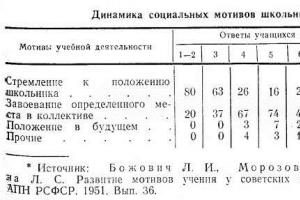Hosta, a member of the lily family, is a rather beautiful and original perennial. Its beautiful flowers, as well as strong decorative leaves, decorate any landscape compositions, look great against the background of trees and shrubs, annual and perennial flowers.
These flowers are loved not only for their beauty; an important advantage is their unpretentiousness, because they tolerate both cold winters and summer heat well. Another important advantage is the ease of care and unpretentiousness of the hosta, but in order for the flower to grow healthy and beautiful, you need to know and follow the recommendations for planting, caring for and growing it.
Features of transplantation
Hosta does not adapt well to new conditions, so it is transplanted to a new place only if necessary. For some time the plant will not look so impressive, the leaf mass and decorative effect will be weak. What could be the reason for a transplant?
- Hosta is heavily thickened;
- The perennial needs to be urgently saved from disease;
- Reproduction required.
Hostas can be replanted in spring and autumn, depending on the species. In the fall, it is recommended to replant Tokudam and Siebold hostas, since their root system has a number of features. It is the autumn planting of the named varieties that most often gives good result, so let's focus on it.
When to plant?
As a rule, planting begins in the first days of autumn so that the flower has time to adapt before the start of winter, and this will take about a month. But each locality has its own deadlines. In central Russia, hosta can be planted from the last ten days of August until mid-September.

Preparing the site
As you know, transplanting any plant begins with choosing a place, and the host is no exception. It is not picky about the soil, but if you plant it in damp or waterlogged soil, the results will be disastrous. Transplanting to clay soil will lead to the same ending. If you want the flower to grow healthy and show off its flowers perfectly decorative properties, plant it in a light, nutritious substrate. Soil acidity should be average.
You need to prepare the soil in advance. How to do it right?
- The soil is dug up and the roots of weeds are removed.
- If there is a lot of sand in the soil, then peat is added.
- It is recommended to mix heavy soil with river sand.
- Poor and depleted soils are not the best place for hosta. They need to be entered mineral fertilizers or some ash.
Hosta loves shade; the scorching rays of the sun can destroy it in a matter of hours. Experienced gardeners It is recommended to plant the hosta next to trees so that it grows in the shade, or next to perennials. Before planting, the soil needs to be well moistened, the water should be warm, you can make a light pink solution of manganese.

Preparing the planting hole
Broken brick or small gravel is poured into the bottom of the hole; humus can be poured on top. The root of the seedling is lowered into the hole and covered with soil. You need to pay attention to the root collar. It should not be above the ground or underground. Don’t forget about mulching; humus can be used as mulch. The root collar must be covered so that the first frosts do not damage the plant.
Advice
Sometimes not one hosta, but several are planted in a flowerbed. Remember that mature bushes can be large, which means that the distance between the holes should also be large. Plant the seedlings so that the distance from one to another is about a meter.
Seedlings of dwarf varieties are planted at a distance of 0.2 m, medium ones - 0.5 m.

Replanting the host
The algorithm for transplantation is simple, it is as follows:
- first you need to dig up the bush;
- shake or wash the roots to remove the remnants of old soil;
- if the roots have damaged areas, they must be carefully removed using sharp pruners;
- The mother bush is divided into sections; those places where the integrity of the tissues will be compromised are sprinkled with ash.
Getting ready for winter
Just because the replanting is complete does not mean that you can forget about the plant until spring. Winter is ahead, and the host needs to prepare for it.
If the weather is warm, the young plant needs to be watered so that it takes root well and meets the winter “fully armed.” Make sure that the soil around the stem is not dry. In areas where winters are mild, covering the flower with mulch (hay, peat or sawdust) will be sufficient. But for middle zone Russia and the northern regions of such a shelter will not be enough.
- The bush needs to be pruned; there should be no old flower stalks on it.
- Some people rush to cut off old leaves; this should not be done. Dry foliage is a natural mulch that will protect the young plant from frost.
- In areas with cold winters, it is recommended to dig the bush and also cover it with mulch.
- In the fall, it is recommended to treat the bushes with special preparations to prevent snails from choosing them in the first spring days. Many gardeners use tobacco dust for this purpose.
Advice
Film and other durable materials that do not allow air to pass through cannot be used; the flower will simply rot.
Hosta is a very interesting shrub. It is distinguished by its unique, lovely flowers with a strong caramel scent. But its main advantage is its succulent, spreading leaves. In addition, the plant grows well without sunlight, so it is often planted under trees or in other shady places in the garden. An important component of autumn hosta care, so that next season it will again delight you with its spectacular appearance, is her proper preparation for winter, namely pruning and covering (mulching).
Features of caring for autumn and preparing hosta for winter: main activities
Many gardeners say that hosta does not need special preparation or specific shelter from severe temperature drops. But this judgment is wrong. This formulation is only suitable for plants grown in the southern regions.

The plant tends to bloom in July-October depending on the species and variety, therefore Initial preparation for winter includes removing buds that have bloomed. This element of caring for hostas in summer and autumn is necessary so that the plant does not waste its energy on the formation of seeds and their ripening.
By the way! If your hostas do not bloom very beautifully (the usual variety), then you can not let them bloom at all, but cut off the flowering shoots immediately after they appear.
Hosta loves moisture and abundant watering. Moreover, you need to water it correctly so that the plant does not get a fungal infection, and more specifically, try not to get it on the leaves.
By the way! Hosta can independently signal the need for watering, namely: it lowers its leaves to the ground. Moreover, you should not allow the leaves to dry out.

Hostas also need watering during the fall months. The soil underneath should be watered generously so that the entire root system is saturated with life-giving moisture before wintering. When the temperature begins to drop, watering will need to be gradually reduced and then stopped completely.
The last nitrogen fertilizing is carried out in the first half of summer for more luxuriant growth of greenery. Before wintering, no nitrogen fertilizers are required, because they will provoke the growth of green mass and rhizomes of the plant, which is why it may not overwinter well, and its resistance to diseases will certainly decrease.
For better preparation plants for winter autumn period it requires phosphorus and potassium, so you can feed the hosta, for example, with bone meal and wood ash (for lovers of organic farming) or mineral fertilizers - potassium sulfate and superphosphate (30-40 grams of each per 1 square meter of bed) or a special ready-made “autumn” fertilizer ( according to the instructions).

Advice! It is better to dissolve mineral fertilizers in water (10 liters), while organic fertilizers should simply be sprinkled around the plant and then watered.
With the onset of cold weather, hostas should be covered, or rather mulched. Mown grass and peat are good for this (they need to be mixed so that the grass does not cake).
By the way! Sawdust absorbs a lot of moisture, and in winter this can be harmful.
It's still possible in the fall divide and replant hostas, you can learn more about this in the next video.
Video: how to divide and replant a hosta in the fall
Trimming hosts in autumn
The question “Should I prune the hosta for the winter in the fall?” - is the cause of controversy among many gardeners.
Some argue that cutting off foliage is highly discouraged. After all, it contains all the nutrients that must independently pass from the greenery to the root of the plant. And after this process is completed, the tops naturally die off on their own.
Others (inexperienced gardeners) argue that it is necessary to trim hosta leaves for the winter.
So should hosta be pruned in the fall for the winter?
According to most experienced gardeners, this is a rather pointless procedure that can only be performed for aesthetic (decorative) purposes, because the plant overwinters well even with leaves.
But if you still decide to prune the hosta for the winter, then when should this be done?
The main signal that the plant can be pruned is when the leaves turn completely yellow. This means that all nutrients have already been safely transferred to the root system.

How to prune hostas in the fall?
Take your pruning shears and cut off all the leaves, leaving about 10 cm of stumps.
Important! In general, it is better to do pruning in the spring; more precisely, you can simply walk with a rake and remove the foliage that has died off over the winter.
Video: why you shouldn’t prune hostas in the fall
Hosta shelter for the winter
Many novice amateur gardeners think about whether they need to cover the hosta for the winter. It’s worth saying right away that in cold regions the plant really needs to be covered. However, the essence of this shelter comes down solely to mulching the area around the bush.
In general, hostas are quite frost-resistant plants, and besides, you don’t need to preserve the above-ground part, it grows again every year.
So how to properly cover a hosta for the winter?
Note! Obviously, you need to mulch before the onset of frost.
Mulching (sheltering) hostas in the fall should be done in the following sequence:
- 1. Mix the mulch mixture. For example, it may consist of mown grass and peat(more). Also you can use bark or compost.
By the way! In principle, you can take the most ordinary garden soil. But using grass, peat or compost will serve excellent organic fertilizer V spring period.
2. Next, mulch the plant, covering it on all sides with a layer of 10-20 centimeters. Just don’t put mulch on top of the leaves under any circumstances! Another thing is that if you cut off the leaves, you can fill it with a mound. In general, the hosta should leave for the winter with leaves, which will finally die after dying and become additional shelter.
Important! Such shelter is quite enough to protect the roots of the plant from severe frosts.
As a rule, you do not need to use special non-woven covering materials, such as agrofibre or spunbond.

Advice! In early spring, do not forget to rake away the mulch to allow the soil to warm up better and the plant to grow faster.
Features of preparing hostas for winter in different regions
Each region has its own nuances of growing plants, in particular hosts. But as for autumn care and preparation for winter, there are differences only in the features of shelter for the winter.
Important! If you have snowless winters, you can play it safe and provide additional cover. non-woven material or spruce branches.
In the south of Russia
Hostas that are grown in the southern regions (for example, in the Krasnodar Territory) practically do not need shelter. It’s another matter if you live in the Volgograd region, where there are quite severe and prolonged frosts.
The approximate dates for mulching (sheltering) hostas in the southern regions are the last days of October - the first half of November.
In the middle zone (Moscow region)
In the conditions of the middle zone (Moscow region), it is necessary to cover the hosta for the winter. In this case, it will be quite enough to mulch the root area with a thick layer of peat mixed with mowed grass, or use bark or compost.
The approximate time frame for covering (mulching) hostas in central Russia (Moscow region) is the end of September - the first half of October.
In the Urals and Siberia
The conditions of the Urals and Siberia are characterized by severe frosts and sub-zero temperatures. Therefore, shelter similar to the middle lane is also needed here. Moreover, for additional insulation you can throw it on snow masses on the plant or immediately cover it with spruce branches.
The approximate time for covering (mulching) hostas in the Urals and Siberia is September.

Typical mistakes in caring for hosta in the fall when preparing it for winter
Many gardeners, without thinking about the consequences, are capable of taking rash actions that can harm the plant. But it's wrong autumn care for hosta in the fall can cause quite severe damage to the plant.

There are several mistakes that should not be made when caring for a plant in the fall and when preparing it for winter:
- Feeding with nitrogen fertilizers with the onset of autumn– nitrogen fertilizing entails increased leaf growth, so the bush will try to produce young leaves rather than prepare to go on winter rest.
- Lack of shelter (mulching) or, on the contrary, the use of special materials for shelter, especially moisture-proof ones. The thing is that hostas overwinter well simply under a thick layer of mulch.
Thus, autumn hosta care is not particularly difficult. To do this, you just need to know the rules for pruning it - cut off only the flower stalks at the end of summer, and do not waste your precious time on autumn pruning of foliage. It’s much better to cover it, or rather mulch it.
Video: preparing hosta for winter
In contact with
Hosta (the second name of the function) – perennial the lily family with large, rather dense leaves. Hosta is very popular not only because of its beautiful flowering, but also because of the decorative nature of its leaves. It is these qualities that are perfectly played out in landscape design: the plant combines with other flowers, shrubs and trees, including conifers. Hosta - pretty unpretentious plant, does not require special care and can withstand the cold winters typical of the temperate climate zone. However, the ornamental plant also tolerates well high temperature in the summer, if it is planted in a shaded area, since the hosta belongs to shade-loving plants and does not tolerate direct sunlight.
How does a hosta reproduce?Hostas reproduce by seeds, but much more easier reproduction produce plants by dividing the bush. To do this, you should choose a well-grown bush. It is best to transplant the hosta while the plant is quite young, optimally if its age is 4 - 6 years. Agricultural experts believe that hosta can be replanted only when absolutely necessary, since it is difficult to tolerate transplantation, after which the plant takes a long time to recover and loses its magnificent appearance for a long period. But often the hosta grows so much that it interferes with the normal growth of other flowers in the flowerbed, then an objective need arises to reduce the area where the bush grows. Before replanting a hosta, it is necessary to carefully consider the location of its new growth, so as not to subject the plant to such an unpleasant procedure.
When is the best time to replant a hosta?
Most favorable time For replanting hostas - spring, when young shoots appear from the ground. You can replant the plant throughout the summer. Gardeners are often interested in the question: can hosta be replanted in the fall? You can replant hostas in the fall, but it is advisable to do this at the very beginning of the season. There are varieties ornamental plant, which are subject only to autumn transplantation due to the fact that their roots do not grow in the spring. These are the Tokudam and Siebold varieties and their hybrids.
Deadlines autumn transplant hosts are limited: from late August to mid-September. It takes at least a month for the plant to take root, get stronger and settle down before the cold weather in a new place.
How to divide the hosta?The hosta bush is dug out completely and the soil is shaken off from its roots. The ends of the roots are slightly trimmed (this is done to rejuvenate the plant). The rhizome is cut with a knife and then broken by hand. Experienced gardeners recommend treating broken areas with ash or a fungicide solution.
How to replant a hosta in the fall?Before transplanting the plant, you need to decide on the planting location. Hostas prefer light, fertile soil with an average acidity level. If the soil in the garden plot is heavy and clayey, it is necessary to structurize the soil by adding sand, rotted sawdust, and peat. A few hours before transplanting, the area of the garden where you plan to plant the hosta needs to be watered.
For planting, a hole about 40 cm deep is prepared, a drainage layer is made, since the hosta does not tolerate waterlogged soil. When planting, the roots are carefully straightened and placed so that there are no voids left under them. If several plants are planted, you should consider what the size of an adult hosta will be: large ones are planted at a distance of about 1 m, medium ones - 0.5 m, and dwarf varieties– 0.2 m. The hole is filled with fertile soil, compacted and watered abundantly. The root collar, which should be located at soil level, is mulched with humus or peat.
The only thing better than a hosta is a hosta of a new variety or a new color – that’s what my friend says. Our dacha street is replete with these bright and spectacular flowers. Favorite hobby friends, redevelopment of the site and redistribution of plants to new places, including the host. And give your neighbors a surplus of exoticism. A little more and the street can be given a new name - Khostovaya.
The dacha people gratefully accept gifts of southern exotics. Everyone liked the unpretentious and stunning plants.
Kripak Lyudmila / Myproplants.com
It is better to plant in the spring, but it is possible in the fall, if there is such a need. True, time is limited. Gotta get it done until mid-September. It will take about a month for the plant to take root well and settle into the new flower garden. Knowing and taking into account the climatic features of the area, it is easy to calculate when it gets colder and when to plant plants.
By the way, there are varieties that are planted only in autumn, their root system grows and develops well during this period. When purchasing seedlings, pay attention to this.
As a rule, bushes 5-6 years old are used for division. To propagate, the plant is completely dug up. To stimulate growth, the ends of the roots are slightly shortened.

Ryzhkova Inna / Myproplants.com
The rhizome is divided by hand or with a knife. If the bush does not give way, use a shovel. I know from personal experience how difficult it can be to divide overgrown bushes.
Dry and diseased parts of the plant are immediately removed. Experienced gardeners recommend treating the section with a fungicide or sprinkling it with wood ash.
To decide with landing place you need to know that hostas grow both in the sun and in the shade. It all depends on the species. The lighter the leaves, the more light they require for growth. However, on hot afternoons, partial shade will not hurt.
Blue hosta varieties are well adapted to grow in the shade. Only when shadow landing the corresponding coloring of the leaves is obtained. True, they grow more slowly, but the bushes are always taller, the leaves are more spectacular and larger.

Elena Sukhanova / Personal archive
Be careful about your choice planting material. The winter hardiness of the plant will depend on the quality. It must be healthy, without signs of disease or mechanical damage.
The soil preferably fertile and light, breathable. Moist, but not soggy. Heavy or clayey soils can be lightened by adding sand, peat or rotted sawdust.
Since hostas grow in one place for a long time, the soil should be filled with humus or compost, especially depleted soil. Potassium-phosphorus supplements will not hurt.
Pit made according to the size of the bush. A layer of crushed stone, small expanded clay or brick is required, i.e. drainage. The young hosta is planted in the center so that the root collar is flush with the soil.
The next specimen should be at a distance of one meter (taking into account further growth).

Elena Sukhanova / Personal archive
Hosts autumn planting must water constantly, upper layer should not dry out.
The leaves are cut off, but not completely, petioles up to 15 cm are left. Closer to cold weather, planting insulated, lightly covered with soil and mulched with sawdust, peat, and fallen leaves.
More than once or twice I have planted hostas in the fall. Always successful. In spring, young plants grew quickly.
High-quality planting material, correct landing and care, these are the components of success. A little patience and attention and your hosts will live in one place for not only a quarter, but even half a century. I read that this is possible.
Hosta is considered an ornamental plant. When to replant the hosta? This question is asked by many gardeners who like the gorgeous shrub. This shade-loving perennial does not have beautiful bright flowers. Its advantage is its luxurious foliage. For decorating flower beds and decorating shaded areas of the garden, the plant is simply irreplaceable.
Hostas are unpretentious in their care and have no complaints about the composition of the soil. If you provide minimal care for the plant, the bush will soon grow greatly. If there is no need, then it is not recommended to touch the plant. This way it will calmly decorate the area. If the foliage becomes very dense, there is clearly not enough space for the plant, then the need arises to replant the bush.
Hosta is a plant from the lily family. It blooms modestly, the flowers are not bright and lush, but the foliage is the true wealth of the plant. Thanks to such splendor of large and dense leaves, hosta is actively used for decorating garden plots. Landscape designers use the plant to decorate flower beds. The flower goes well with annuals and perennials, beautiful in composition with small shrubs, use it as a decoration for shaded areas under trees.
The plant is unpretentious, but certain nuances must be taken into account when replanting it:
- 1 The flower tolerates winter cold well, so it can be grown in almost any climate.
- 2 The plant can easily withstand high temperatures, but still feels better in shady corners of the garden. Exposure to direct sun rays the host should not be exposed.
- 3 The timing of planting and replanting may vary depending on the variety. For each type, it is advisable to obtain specialist advice or find information on your own.
Hostas do well in shaded areas, but you still need to choose a place in accordance with the needs of the variety. Plants with rich green and blue foliage is best placed under fruit trees. The thick crown will protect the hosta from the bright sun.
Where and how is the plant planted?
Hosta is transplanted from one place to another through seedlings (initially grown from seeds or purchased seedlings in specialized stores). Sometimes you have to plant it with mature bushes. The most best time They consider it to be spring. It is in spring that the root system actively develops, although the rosettes on the leaves are still closed. It is not forbidden to replant a flower in the autumn; in this case, it is better to do this procedure in the early days of the autumn season. Starting from the second half of September, the hosta should not be replanted - the roots of the plant will not be able to gain a foothold in the soil.
If the leaves have golden or yellowish hues, then the most suitable place for them will be near small bushes, on the side where there is shade at midday. Transplanting the hosta into such a corner of the garden will allow the plant to enjoy a portion of the morning rays, and in the heat of the day it will protect it from strong solar radiation. If there is no place on the site with such conditions, then it is better to plant these varieties in the shade.
Traditional planting by transplanting seedlings is carried out in the spring. Hobbyist gardeners can grow seedlings themselves. Planting material is sold in gardening stores. Young flowers may have a closed root system or open roots.
The first option when transferring to open ground doesn't cause any trouble. In a suitable place, it is enough to prepare a hole and place the plant there along with a lump of earth. A flower with bare roots is planted differently: fertilizer and peat must be placed in a heap in the hole. Distribute the roots along the slopes of the hill, sprinkle with earth and compact. Water the soil generously.

Important: the bud should remain on the surface and should not be covered with soil.
How to prepare a site
Before you think about how to replant the hosta, you need to take care of preparing the site. The flower is not picky about the composition of the soil; it can grow in any soil composition. Although there are also contraindications - land that contains a lot of clay, damp, marshy areas. Ideal soils are light in composition, which can provide air access to the roots.

Preparatory work on the site is as follows:
- 1 The earth is dug up very carefully, all roots and weeds must be removed from it. Moreover, if you do this once and carefully, then in the future it will be much easier to care for the plant.
- 2 It is necessary to study the composition of the soil. In heavy and oily soil, you should add humus that is light in composition. You can add dry leaves, fine sand, and sawdust to the soil. If the soil contains a lot of sand, then you need to dilute it with peat.
- 3 If land plot is infertile, then you need to add mineral fertilizers; ash is also perfect.
- 4 The roots of a flower are located in the soil in a horizontal direction. The hole for planting must be dug wide, so that the plant will receive abundant nutrition, which will enhance the lushness of the leaves and their beauty. The soil moisture level should be moderate.
Preparation of material
Regardless of what species the hosta belongs to, it looks like this: an herbaceous flower with a short rhizome. This plant is shade-tolerant and does not have any special requirements for growing conditions. It is usually used in plantings to make groups of plants decorative. Hosta perfectly decorates any garden plot. It is no less elegant as an independent decoration. Lawns, borders, flower beds are places where this amazing herbal flower finds its application.
Stores and garden centers offer bare-rooted plants to their customers. The hosta is placed in a bag, sprinkled with peat or sawdust. Planting materials can be sold in pots. But it happens that unscrupulous sellers cut off the roots of such plants.

If such material is purchased, then you should remove the flower from the bag and carefully examine the roots. If damaged or rotten threads are noticed, they must be removed immediately.
Options for preparing a plant for transplanting into soil may vary. If the root was purchased in winter - at the beginning of spring and the time has not come to replant it in the soil, then you should place the root dry in a cold place (a vegetable container in the refrigerator is suitable). Subzero temperature contraindicated. The storage temperature should not be higher than 5ºC.
In the case when the bud has begun to grow, but it is too early to plant the plant in the soil, the roots must be soaked in solutions of epin or energin (potassium permanganate is also suitable, but very weak). Then you should plant the plant in flower pot. You need to take light soil. There is no need to water it; the host should receive water from the pan. As soon as the soil warms up, the flower is transplanted into open ground. In this option, it is necessary to take into account that the hosta grown in such conditions is very tender and capricious; even light frosts can destroy it.
You can buy a plant just before transplanting it into the ground, then the problems will be solved - it will take root better.
The most a good option To grow a full-fledged, strong and healthy plant, replant in the fall. You can buy material from other gardeners directly from the garden or in nurseries. The plant is immediately planted in your garden in a prepared place.
To transplant a seedling, you can ask your neighbors or buy it at the market - this option is more economical. The plant is sold at the gardeners’ mini-market in the form of “divisions” (parts of a bush). If your neighbors have given you the go-ahead to select a bush, then wait until the hosta looks like a bunch of unopened leaves. Usually for the middle zone this is mid-May. You should dig the bush with a pitchfork. Forks are less likely to damage the root system. The posts must be disassembled manually. The fragment for transplantation must have at least 2 parts of unopened leaves. Must be on hand for transplantation wood ash. It is sprinkled on the cut areas so that they are better overgrown.

You can replant the hosta in divisions in the fall, then next season it will delight you with full-colored leaves. Can be replanted in spring. In this case, there will not be such beautiful and colorful leaves, but the plant will take root well.
If you already have a hosta growing in your garden plot, you can plant it using the above method.
Transfer rules
Delenki should be planted in the ground on the same day on which they were dug up or bought at the market. Prepare a hole large enough to accommodate the roots of the purchased plant. Do not forget that humus should be placed in the hole. Pour into the hole warm water, which should be absorbed into the humus. It is necessary to pour at least 1 liter per bush. The roots must be handled with care - arrange them so that they intertwine and do not penetrate into the depths. The option for locating the root system on an earthen mound is described above. This is the most common way to replant hostas.
Hostas are not capricious in terms of providing fertilizers. They will accept fertilizing during planting with gratitude, delighting the owners with the lush flowering of foliage. Ordinary will do just fine complex fertilizer, which can be purchased at any gardening store. They must be used in accordance with the instructions.

Despite the fact that hosta loves shady places, it does not tolerate stagnant moisture. If you need to replant the plant in an area where water is expected to stagnate, provide drainage. To do this, place sand or expanded clay at the bottom of the hole, you can throw in medium-sized crushed stone or broken bricks. In such cases, the hole should be deeper.
Watering is carried out as the soil dries; after watering, you can add grass or sawdust under the plant. This mulching will help retain moisture for nutrition.
Young sparse bushes do not look very beautiful. Therefore, when planning to replant the hosta, try to choose large bushes. An excellent option would be to transplant several varieties of hosta into one place. This way the flower garden will look just great.
A skillful combination of hosta with the surrounding landscape will give garden plot sophistication. Tall plants or bushes are usually placed in the background. Ornamental shrubs With vibrant flowers, astilbes make a stunning backdrop for hostas. If the plant is planted on the border, then without a bright floral design it will look boring and dull. Any bright flowers are suitable for dilution. It is better to choose large plants with colorful flowers. Hosta looks great in combination with almost all garden flowers.
It must be remembered that the hosta will be able to fully demonstrate its decorative qualities no earlier than 4 years after planting. Every year it grows larger, and its leaves become more luxurious. Before dividing the plant and replanting it in new places, you need to let it show itself in all its beauty.
Transplantation can be done in autumn and spring. It depends on what material you use. If you decide to grow hosta, then try to immediately choose a convenient and right place. Frequent transfers will lead to weakening of the plant. And the host can grow in one place for almost 20 years.










